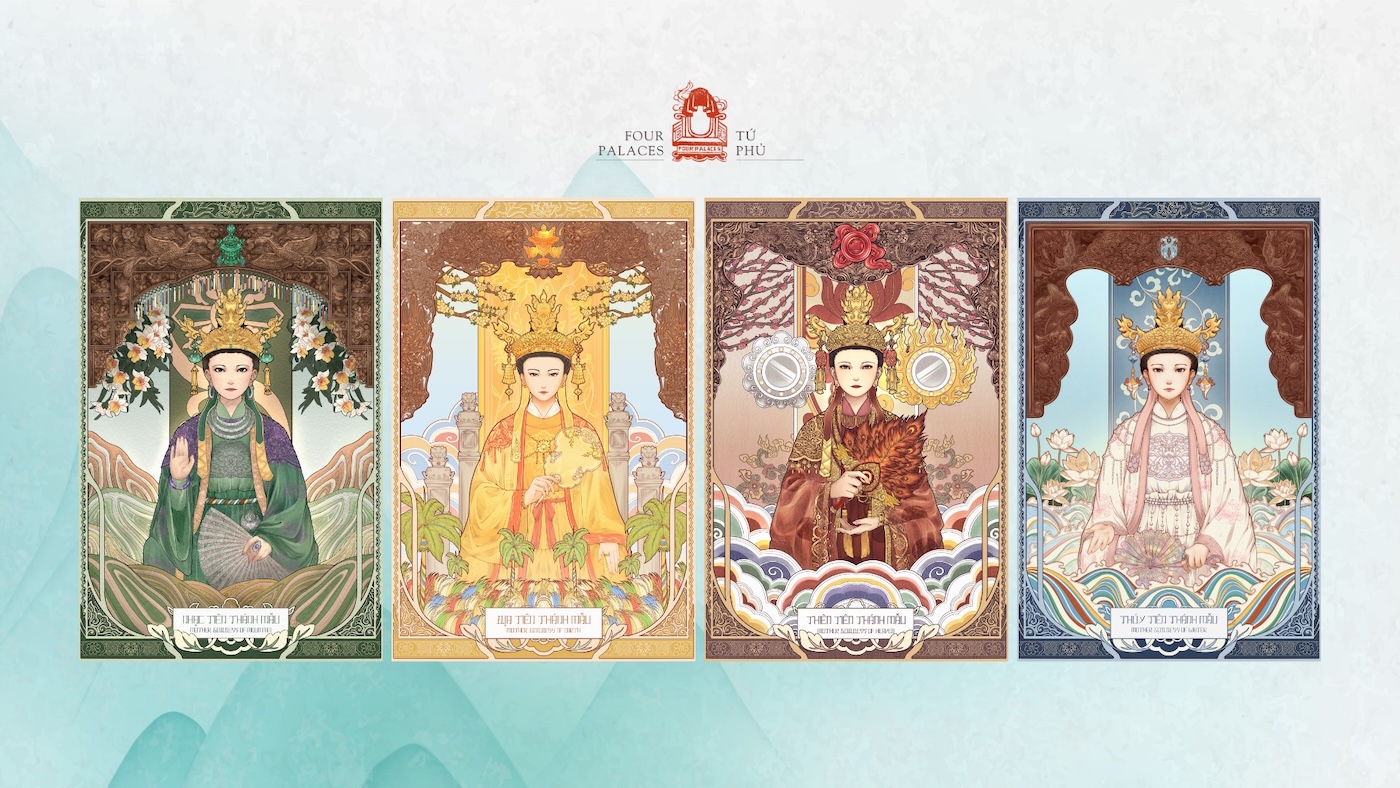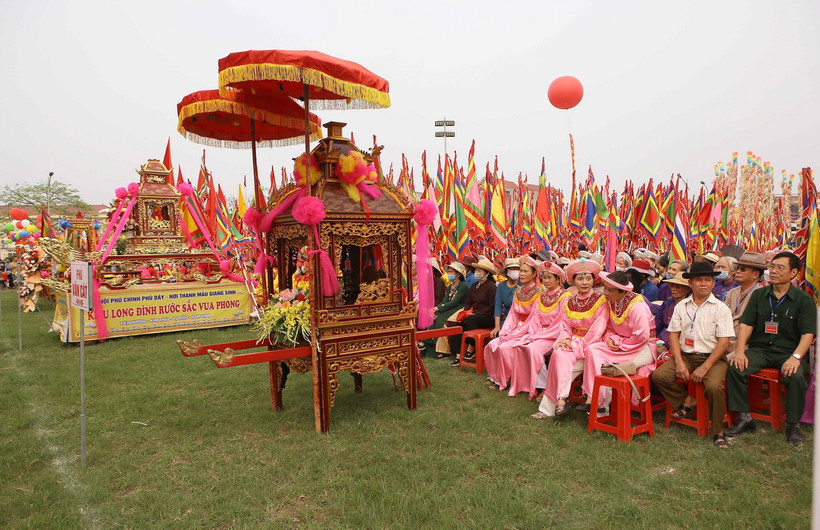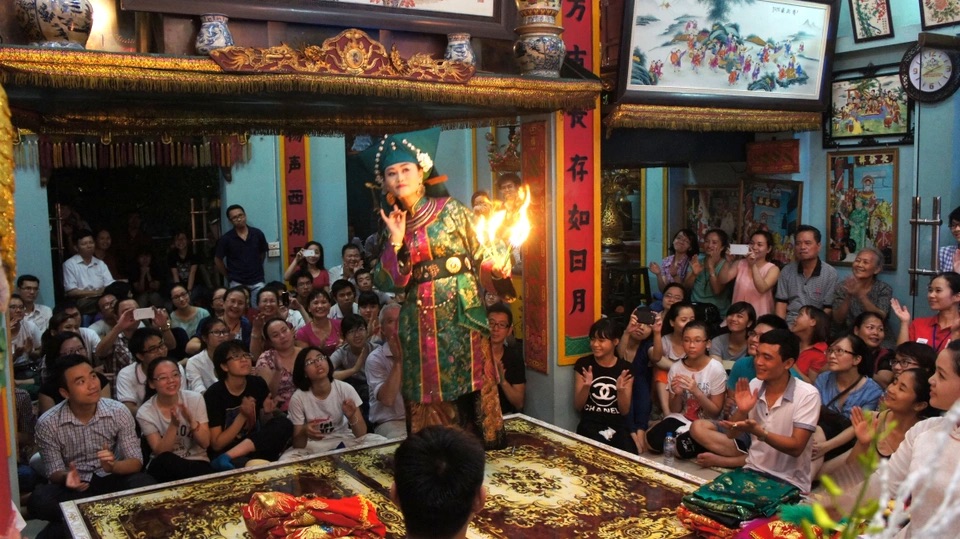This living tradition, formally recognized by UNESCO in December 2016 as an Intangible Cultural Heritage of Humanity, continues to shape how Vietnamese people see their history, identity, and spiritual life.
Honoring The Sacred Feminine In Vietnamese Belief
At the heart of this belief system is the worship of sacred feminine deities, guardians of nature and human life. Known collectively as the Mother Goddesses of the Three Palaces, or Tam phủ, these divine figures preside over three realms: the heavens, forests and mountains, and rivers and seas. Each palace is ruled by a principal Mother: Mẫu Thượng Thiên (Mother of the Skies), Mẫu Thượng Ngàn (Mother of the Forests), and Mẫu Thoải (Mother of the Waters), who embody the forces of fertility, protection, and prosperity.
Among them, Thánh Mẫu Liễu Hạnh stands out as one of the most beloved and central figures, being a symbol of resilience and liberation.

According to the Vietnam Cultural Heritage Association, the Mother Goddess belief system took form as a localized expression of spiritual power, where the divine was envisioned in the image of a nurturing mother. This feminized belief structure became a way for Vietnamese women, especially in past generations, to express their hopes for freedom from the constraints of Confucian patriarchal norms.
A Colorful, Living Tradition
The practice is not bound by geography as it spans across Vietnam, from the northern highlands to the central provinces, and even into the south. Among these regions, Nam Dinh Province (now Ninh Binh) is widely regarded as one of the significant spiritual centers for the worship of Thánh Mẫu Liễu Hạnh, the central figure in the belief system. This province is home to Phủ Dầy and Phủ Nấp, sacred sites closely associated with the legends of the Mother Goddess’s earthly incarnations. Across Nam Định, there are nearly 400 places of worship dedicated to the Mother Goddess, forming a dense network of temples and shrines that preserve and celebrate her legacy. These are not only places of ritual but also spaces of collective memory and cultural continuity, where communities come together to honor the divine and reconnect with their heritage.

Every year, Phủ Dầy Festival draws thousands to celebrate the Mother Goddess through a full week of offerings, processions, and performances. It takes place from the third to the tenth day of the third lunar month, marking the death anniversary of Thánh Mẫu Liễu Hạnh. During this time, temples are filled with the sound of chầu văn (ritual singing), the rustle of ceremonial robes, and the rhythmic movements of the lên đồng ritual. In this ceremony, a medium enters a trance state to channel the spirits, accompanied by live music, symbolic offerings, and sacred choreography.
A Tradition of Gratitude and Connection
Beyond its spectacle, the belief in the Mother Goddess is rooted in gratitude. It reflects a deeply held Vietnamese value: remembering one’s roots. This is clearly seen in the pantheon of more than 70 deities, many of whom were real people who served their country with courage and wisdom, generals like Trần Hưng Đạo or Phạm Ngũ Lão, who became spiritual symbols of protection and patriotism.
The faithful do not simply pray for favors. Participating in ceremonies or preparing for a festival is an act of care, reverence, and community building. People make offerings not only for personal well-being but also to express thanks for blessings already received. In this way, gratitude is expressed through tangible acts: maintaining altars, organizing festivals, supporting temple upkeep, or simply showing up to pay respects.

These acts help build a collective sense of belonging. They also teach younger generations the importance of acknowledging the past, not only through history books, but through action, memory, and shared rituals. What might seem spiritual from the outside is, for many Vietnamese, also a way to carry on family values and national pride.
Tín ngưỡng Thờ Mẫu Tam phủ is a gentle thread in the fabric of Vietnamese life. Through rituals, festivals, and daily offerings, it nurtures connection, gratitude, and spiritual balance.
Cherished for its presence, this belief continues to shape how people honor their past and carry forward what matters with care, with meaning, and with heart.
